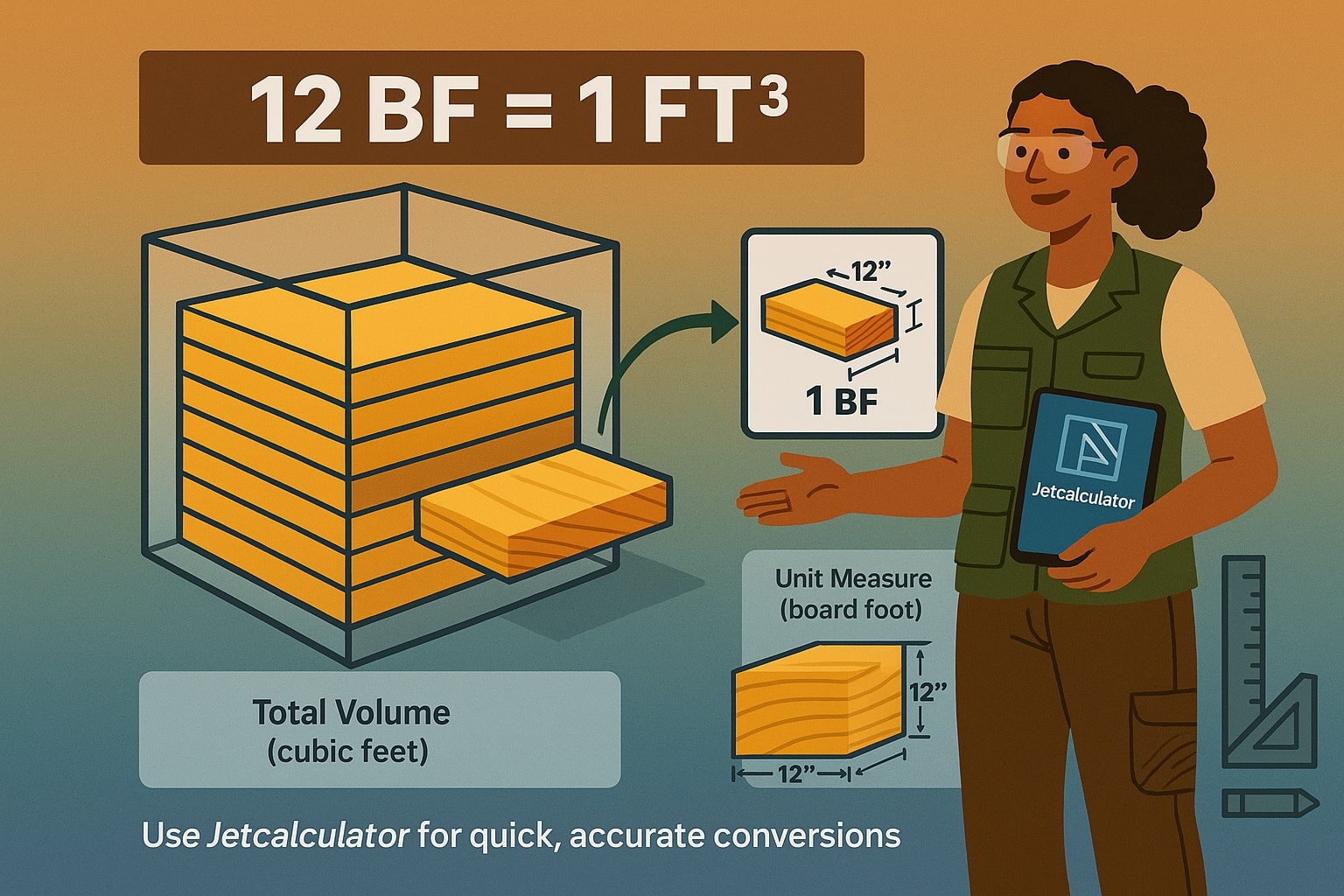Board Foot to Cubic Foot – How to convert bf to ft³
Need to convert board foot to cubic foot? These two lumber measurements are closely related, but they serve different purposes. Board feet are the standard unit for pricing and selling wood, while cubic feet measure total volume more broadly. Whether you’re estimating materials, budgeting for a project, or trying to make sense of lumberyard math, Jetcalculator can help you handle the conversion quickly. Let’s break down the formula, share some real-world context, and even uncover some surprising lumber industry facts.

What is a board foot (bf)?
A board foot is a unit used in the lumber trade to measure volume in a way that reflects the dimensions of boards. One board foot equals a board that is 1 inch thick, 12 inches wide, and 12 inches long – or 144 cubic inches total.
Because it’s tailored for boards, this unit makes it easy to calculate the quantity and cost of dimensional lumber without switching to less intuitive cubic measurements.
What is a cubic foot (ft³)?
A cubic foot is a broader volume unit used for all sorts of materials, not just wood. It represents a cube that’s 1 foot (12 inches) on each side, or 1,728 cubic inches total.
While it’s not specific to lumber, cubic feet are often used when estimating shipping space, storage, or bulk material volumes – and sometimes for converting large lumber totals to a single, easy-to-understand volume figure.
How to convert board foot to cubic foot
The relationship between the two is fixed:
1 cubic foot = 12 board feet
To convert from board feet to cubic feet:
Cubic Feet (ft³) = Board Feet (bf) ÷ 12
Example: If you purchase 240 board feet of lumber:
240 ÷ 12 = 20 ft³
For quick, no-math results, use our Volume Converter or explore more Conversion tools.
Did you know?
-
Industry standardization: The board foot was first widely adopted in North America in the late 1800s to bring consistency to lumber pricing, replacing older, regional units like the “cord.”
-
Efficient shipping: Lumber exporters often convert board feet into cubic feet when calculating freight space, since cubic measurements match international shipping standards better than board feet.
-
Scaling production: A single mature Douglas fir can yield over 17,000 board feet of lumber, which equals roughly 1,417 cubic feet once milled – enough to frame several houses.
-
Historical quirks: Before the board foot became dominant, some regions used bizarre measures like the “hundred of timber,” which varied so much between towns that buyers routinely overpaid.
The Standard That Simplified the Lumber Trade
In the late 19th century, as railroads and cities expanded across North America, lumber became one of the most traded commodities. According to American Lumberman archives, sawmills, merchants, and builders pushed for a standardized unit – the board foot – because inconsistent local measures led to disputes and unpredictable costs.
While the board foot became the pricing standard, many mills and shippers continued converting totals into cubic feet for transport and export, since freight rates were often calculated by cubic volume. This dual-unit approach remains common today, especially for large-scale building projects and exports.

Wrapping It Up
Converting board foot to cubic foot is as simple as dividing by 12. Whether you’re comparing lumber prices, figuring out shipping requirements, or managing inventory, this conversion bridges two of the most important units in the wood and construction industries.
For fast and accurate results, use our Volume Converter or explore other Conversion tools to simplify your lumber calculations.

